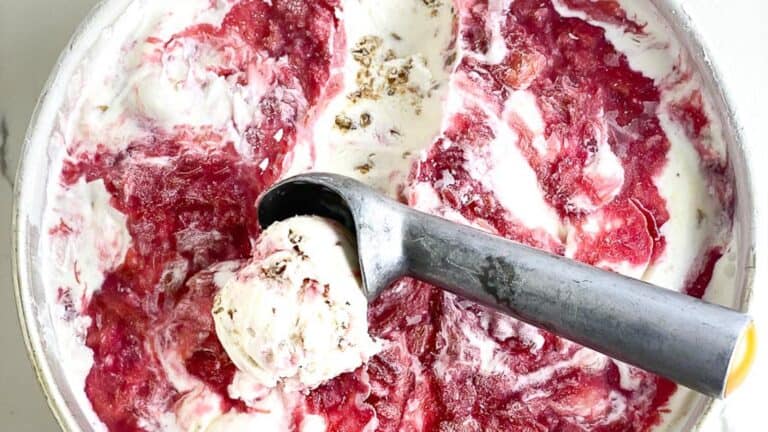Say Goodbye to Waste: Preserve Fresh Herbs Like a Pro
Fresh herbs are a wonderful addition to any kitchen, infusing dishes with vibrant flavors and aromatic scents. However, their short shelf life can be a challenge for home cooks. Preserving fresh herbs allows you to enjoy their essence year-round, reducing waste and saving money. This guide explains various methods to preserve fresh herbs, including drying, freezing, and dehydrating.
Drying Herbs

Drying is one of the most traditional methods of preserving herbs. It’s simple, requires minimal equipment, and retains the herb’s flavor for a long time. Let’s look at air drying, oven drying, and microwave drying.
Air Drying

- Preparation: Start by gently washing your herbs and patting them dry. Remove any damaged leaves.
- Bundling: Gather the herbs into small bunches, tying them with string or a rubber band.
- Hanging: Hang the bundles upside down in a warm, dry, and well-ventilated area, away from direct sunlight. A dark, airy room is ideal.
- Time Frame: Allow the herbs to dry for about 1-3 weeks, depending on the humidity and type of herb. They should be dry and crumbly when ready.
- Storing: Once dried, remove the leaves from the stems and store them in airtight containers, away from light and heat.
Oven Drying

- Oven Temperature: Preheat your oven to its lowest setting (usually around 150°F or 65°C). Wash and dry the herbs thoroughly.
- Preparation: Spread the herbs in a single layer on a baking sheet lined with parchment paper.
- Drying: Place the baking sheet in the oven, leaving the door slightly ajar to allow moisture to escape. Check the herbs frequently and turn them to ensure even drying.
- Storing: Once the herbs are completely dry, store them in airtight containers.
Microwave Drying

- Preparation: Wash and dry the herbs. Place a single layer of leaves between two paper towels.
- Microwaving: Microwave on high for 1-2 minutes, checking frequently to prevent burning.
- Storing: Store the dried herbs in airtight containers.
Freezing Herbs

Freezing herbs preserves their fresh flavor and bright color. This method is quick and retains more of the herb’s original taste compared to drying.
Freezing Whole Leaves

- Preparation: Wash and dry the herbs. Remove the leaves from the stems.
- Freezing: Spread the leaves in a single layer on a baking sheet and place it in the freezer.
- Storing: Once frozen, transfer the leaves to a freezer-safe bag or container.
Herb Cubes

- Preparation: Chop the herbs finely.
- Freezing: Fill ice cube trays with the chopped herbs, then top each compartment with water or olive oil.
- Storing: Once frozen, transfer the herb cubes to a freezer-safe bag or container.
Dehydrating Herbs

Using a food dehydrator is an efficient and consistent way to dry herbs. This method is especially useful for those who preserve large quantities.
- Preparation: Wash and dry the herbs thoroughly. Arrange the herbs in a single layer on the dehydrator trays, ensuring there is space between them for air circulation.
- Dehydrating: Set the dehydrator to the appropriate temperature (usually around 95°F to 115°F or 35°C to 46°C). Check the herbs periodically. Drying time can vary from 1-4 hours depending on the type of herb and humidity level.
- Storing: Once completely dry, store the herbs in airtight containers.
Other Preservation Methods

There are additional approaches that can add flavor to your cooking, such as infused oils, vinegars, herb butters, and infused salts and sugars.
A Note On Herb Infused Oils and Vinegars

There are many recipes on the Internet for infused oils and vinegars that go against the FDA recommendations for safety. There are risks of botulism unless prepared properly and refrigerated, and yet, many recipes suggest room temperature storage, even extendedly. Commercially prepared products have preservatives, but unless you are properly canning, or acidifying, there are safety risks.
Please refer to this guide for more information on how to do this safely.
Herb Butters

- Preparation: Soften unsalted butter to room temperature.
- Mixing: Chop the herbs finely and mix them into the softened butter.
- Shaping: Shape the butter into a log using parchment paper or place it in a container.
- Storing: Store in the refrigerator for immediate use or freeze for longer storage.
Salt and Sugar Preservation

- Herb Salt: Finely chop the herbs and mix with coarse salt. Spread the mixture on a baking sheet to dry, then store in an airtight container.
- Herb Sugar: Similar to herb salt, mix finely chopped herbs with sugar and allow to dry. Store in an airtight container.
Best Practices for Preserving & Using Herbs

- Selecting Herbs: Choose fresh, healthy herbs without any signs of disease or pests. Harvest herbs in the morning after the dew has dried, but before the sun gets too hot.
- Storage Tips: Store dried herbs in a cool, dark place to prevent light and heat from degrading their quality. Label containers with the herb name and date of preservation to keep track of freshness.
- Usage: When using dried herbs in recipes, remember that their flavor is more concentrated than fresh herbs. A general rule of thumb is to use one-third the amount of dried herbs as you would fresh.
- Frozen Herbs: These can be used directly in cooking without thawing, making them convenient for soups, stews, and sauces.
The Takeaway

Preserving fresh herbs ensures that you can enjoy their flavors year-round, enhancing your culinary creations without the need for frequent trips to the grocery store. Whether you choose to dry, freeze, or dehydrate your herbs, each method has its benefits and can be tailored to suit your needs and preferences. With a little preparation and care, you can keep the essence of summer’s bounty alive in your kitchen through every season.
40 Versatile Variations Of Pesto: Fast, Fresh & Fantastic!

Pesto is a flavorful green sauce made from fresh basil, pine nuts, garlic, olive oil, and Parmesan cheese. It has a strong, aromatic taste and bright green color. Pesto can be used as a sauce, a spread, or an ingredient to add flavor to other dishes.The classic way to use pesto is tossed with pasta. However, there are many other ways to enjoy pesto that we’ll explore here. You can use it in Instant Pot and slow cooker meals, vegan recipes, hand pies, chicken wings, salads, main courses, soups, appetizers, and more. Pesto doesn’t have to be made with just basil and pine nuts. We’ve got recipes using sun-dried tomatoes, wild garlic, capers, kale, parsley, arugula, cilantro, walnuts, almonds and more. Check out these 40 pesto recipes!
Unlocking The Power Of Fermented Foods For Gut Health

More people are increasingly mindful of their health, with a growing interest in understanding the role of the gut microbiome in promoting overall well-being. The consumption of fermented foods has garnered considerable attention as a way to support a healthy gut ecosystem. The idea of “fermented” foods might seem odd at first, but most of us are familiar with traditional pickles, and yogurt, to name possibly the two most common fermented items in the supermarket, and perhaps your own refrigerator. There is a diverse array of fermented foods that have the potential to transform and enhance your gut health – and to bring flavor to your meals. We have what you need to know!
Join Us

Join us on this empowering journey as we explore, celebrate, and elevate “her story.” The Queen Zone is not just a platform; it’s a community where women from all walks of life can come together, share their experiences, and inspire one another. Welcome to a space where the female experience takes center stage. Sign up for our newsletter so you don’t miss a thing, Queen!







